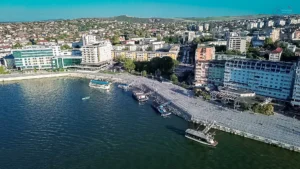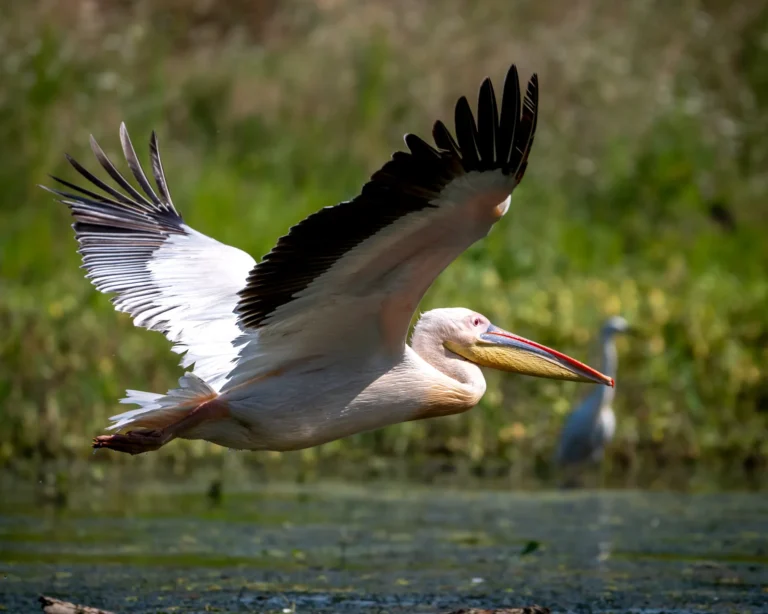
White Pelican

Description and how to observe White Pelican:
The White Pelican is one of the most spectacular birds in the Danube Delta, with a wingspan that can exceed 3 metres and a pristine white plumage, accentuated by a pinkish tinge in the breeding season. It is easily recognisable by its massive, orange-yellow bill with a large fishing pouch. It can be easily spotted in areas with large stretches of water, such as Razim, Sinoe lakes or near reed colonies. The best time to watch is spring and summer when it returns for nesting.
What it feeds on White Pelican:
Its main food is fish, which it catches spectacularly with its gular pouch. It favours small and medium-sized fish such as mackerel and baboon, but also eats other fish that are plentiful. It is known for its team fishing: several pelicans form a semicircle and chase the fish towards shallow water to catch them more easily.
Threats:
The main threats to the White Pelican are declining habitat quality, water pollution, overfishing and disturbance from uncontrolled tourism. Climate change and the drying up of wetlands can also adversely affect feeding and breeding sites.
Ecological role:
More information about Pelecanus onocrotalus:
The Danube Delta is home to one of the largest colonies of White Pelicans in Europe. The species is protected at European and national level, and watching them is one of the region's main eco-tourism attractions. Guided birdwatching tours contribute to environmental education and the protection of its natural habitats.
Discover now the most beautiful places in the Danube Delta!
In the following pages, you will find detailed information about:
- Top tourist destinations: Traditional villages, nature reserves, tourist trails and much more.
- Activities and attractions: Everything you need to know about boating, fishing, bird watching, cycling and other activities.
- Accommodation and catering: Accommodation to suit all budgets and restaurants serving traditional cuisine.




